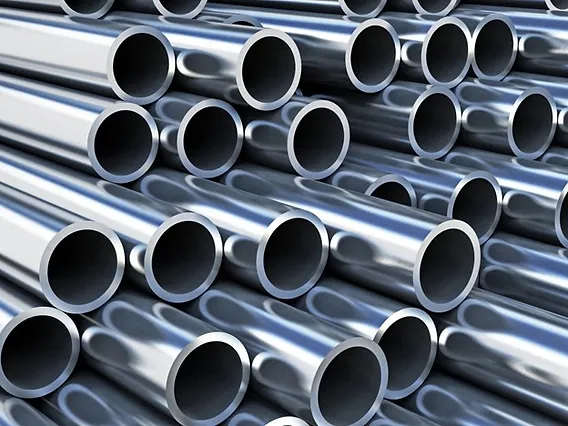Choosing the correct steel for your project sometimes boils down to duplex steel and stainless steel. While both are strong and corrosion-resistant, they have distinct differences. Duplex steel combines austenitic and ferritic microstructure, resulting in increased strength and resistance to stress corrosion. Stainless steel is versatile and widely utilized throughout sectors, with several grades available.
This article will describe the fundamental distinctions, allowing you to determine which material is best suited to your durability and performance requirements.
What is duplex stainless steel?
Duplex steel, commonly known as duplex stainless steel, is a form of stainless steel with a distinctive two-phase microstructure made up of austenite (face-centered cubic lattice) and ferrite (body-centered cubic lattice) in about equal parts. This structure gives duplex steel higher strength and corrosion resistance when compared to conventional austenitic stainless steels such as Type 304 or 316. It is specifically designed to resist chloride stress corrosion and chloride pitting corrosion, making it appropriate for use in chloride-rich settings.
Duplex steel contains more chromium (20-28%), molybdenum (up to 5%), and nitrogen (0.05 – 0.50%), but less nickel (up to 9%) than austenitic grades. These features improve its durability and lower costs. Its great strength enables for thinner portions, which increases cost efficiency. Duplex steel, which is widely used in the offshore oil and gas industry, petrochemical pipelines, and marine applications, combines greater corrosion resistance, increased strength, and affordability, making it the chosen material for demanding industrial applications.
What is Stainless Steel?
Stainless steel, commonly known as inox or corrosion-resistant steel, is an iron-based alloy that is highly resistant to rust and corrosion. This durability stems from its chromium concentration, which is at least 10.5%. When exposed to oxygen, the chromium develops a passive layer on the surface, protecting the material and allowing it to self-heal. Depending on the use and cost, stainless steel may contain components such as molybdenum, nickel, nitrogen, and carbon.
Duplex Steel vs Stainless Steel: A Comparison
| Property | Duplex Steel | Stainless Steel |
| Strength | Nearly twice the strength of stainless steel | Moderate strength depends on the range |
| Corrosion Resistance | Superior in chloride-rich environments | Effective, but less resistant to chlorides |
| Stress Corrosion Cracking | Highly resistant | Prone to cracking in chloride environments |
| Cost | More cost-effective for high-performance applications | Higher cost for high-grade options like 316 |
| Fabrication | Requires expertise in welding and shaping | Easier to fabricate and weld |
Galvanic Corrosion Between Stainless Steel and Duplex Stainless Steel
Duplex stainless steel has much greater corrosion resistance than normal stainless steel, particularly in severely hostile conditions. Austenitic stainless steel grades, such as 316, can withstand high amounts of chlorides but are less effective against acids. Duplex stainless steel, on the other hand, has higher resistance to chlorides, acids, reducing agents, and oxidizing agents, making it a more dependable choice for harsh environments.
Duplex stainless steel has superior corrosion resistance than most austenitic grades, allowing it to operate better in hostile chemical conditions. However, because of their remarkable corrosion resistance and adaptability, more specialist materials like Hastelloy are frequently required for particularly hostile applications, such as acid manufacturing facilities.
Pickling and Passivation of Duplex and Stainless Steel
Passivation is a natural process that happens in stainless steel with high chromium concentration. Duplex stainless steel, which contains chromium levels ranging from 19% to 32%, develops a passivated oxide coating on its surface that protects it from corrosion. This self-repairing layer is critical to the longevity and corrosion resistance of duplex stainless steel. In contrast, some stainless steel alloys with lower chromium content are unable to generate this protective layer, making them susceptible to oxidation and corrosion. However, these alloys can be passivated to improve their corrosion resistance by intentionally generating an oxide coating.
Pickling, on the other hand, is a chemical technique for removing surface scales and impurities created by exposure to high temperatures or neighboring chromium coatings. Chemical solutions, often including nitric acid (HNO3) and hydrofluoric acid (HF), are used to clean the surface of stainless steel. Unlike mechanical techniques, which can damage the metal’s surface, chemical pickling successfully eliminates undesirable layers while preserving the material. This technique not only improves the metal’s look, but it also increases corrosion resistance by preparing the surface for a more effective passivation layer.
Pickling and passivation are both necessary procedures for preserving the integrity and performance of duplex and stainless steel, particularly in demanding applications requiring high corrosion resistance.
Advantages of Duplex and Stainless Steel
The advantages of duplex stainless steel vary depending on its composition and application. Duplex stainless steel has superior corrosion resistance and mechanical strength, surpassing several conventional stainless steel grades. Its dual-phase structure combines the greatest features of ferritic and austenitic stainless steels, resulting in greater durability and resistance to stress corrosion cracking. While its highly alloyed nature makes it less expensive than premium grades such as 904L, duplex stainless steel also performs exceptionally well in difficult situations. However, like other stainless steels, it has limitations at extreme temperatures, with worse impact resistance below -50°C and poorer usability at very high temperatures when compared to nickel alloys.
Conclusion
The proper steel relies on your project’s individual requirements. Duplex stainless steel has high strength, superior corrosion resistance, and low cost, making it an ideal choice for harsh situations. In contrast, stainless steel is adaptable and suitable for a wide range of common applications. At Newzel Industries, we understand the importance of selecting the proper material and are dedicated to assisting you in finding the finest option for your project.


